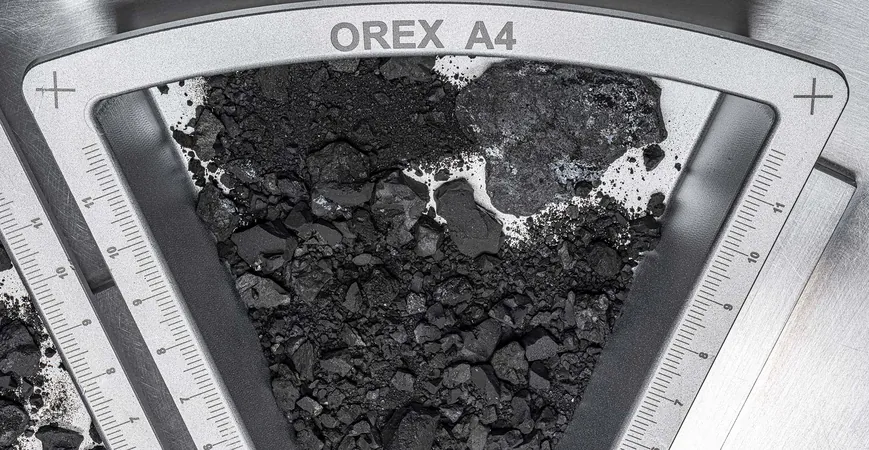
Bennu: The Asteroid from the Dawn of Our Solar System Holds Secrets and Risks
2025-08-22
Author: Rajesh
A Glimpse into the Birth of the Solar System
Approximately 4.6 billion years ago, a swirling mass of cosmic dust lay the foundation for our solar system. Among the remnants of that primordial chaos is Bennu, an ancient asteroid offering clues to our celestial origins. Yet, this intriguing space rock poses a potential threat as one of the most likely asteroids to collide with Earth.
Missing Pieces of a Cosmic Puzzle
Recent studies have unveiled that Bennu lacks some fundamental materials, specifically early solid components known as chondrules and refractory inclusions. These elements, rich in silica, calcium, and aluminum, formed shortly after the solar system's inception but are found in scant amounts on Bennu.
"The limited presence of these materials suggests that Bennu originated from a less common region of the solar system, possibly a parent body that hasn't provided us with many meteorites to study," explains Dr. Ashley King, a key researcher in this groundbreaking project.
Unmasking the Ancient Conditions of Bennu's Formation
The rocky core of Bennu took shape when cosmic dust began to coalesce. This process involved a range of chemical reactions producing various salts and organic materials. The OSIRIS-REx mission has been pivotal in collecting and analyzing samples, leading to exciting discoveries about the conditions that influenced Bennu's formation.
"We’re beginning to precisely map the environment that shaped Bennu, particularly by studying minerals like iron sulfide, which can reveal the temperatures and reactions that occurred over time," Dr. King adds. Surprisingly, some reactions were happening at around 25 degrees Celsius, much warmer than one might expect in space.
Bennu: The Boundary Between Asteroids and Comets
Interestingly, Bennu's characteristics blur the line between asteroids and comets. While it is more rocky in nature, the OSIRIS-REx mission observed tiny particles being ejected from its surface, reminiscent of comet behavior. "Bennu is almost an intermediate between comets and asteroids," Dr. King notes, illustrating the complexity of these celestial bodies.
Future Explorations and Ongoing Research
Further investigations into Bennu could hold the key to understanding not just its own history, but also the nature of other celestial bodies. A mission by the Japanese Space Agency, called DESTINY+, aims to explore another near-Earth asteroid, Phaethon, known for its tail of dust. Scheduled to launch in 2028, this mission will complement ongoing research on Bennu and contribute to our understanding of the dynamic and fascinating solar system.
A Cosmic Treasure Trove Awaits
As scientists delve deeper into the materials collected from Bennu, each analysis reveals more about our solar system's formation and the environments that forged the planets we know today. The future holds exciting possibilities as we continue to connect the dots of our cosmic history.



 Brasil (PT)
Brasil (PT)
 Canada (EN)
Canada (EN)
 Chile (ES)
Chile (ES)
 Česko (CS)
Česko (CS)
 대한민국 (KO)
대한민국 (KO)
 España (ES)
España (ES)
 France (FR)
France (FR)
 Hong Kong (EN)
Hong Kong (EN)
 Italia (IT)
Italia (IT)
 日本 (JA)
日本 (JA)
 Magyarország (HU)
Magyarország (HU)
 Norge (NO)
Norge (NO)
 Polska (PL)
Polska (PL)
 Schweiz (DE)
Schweiz (DE)
 Singapore (EN)
Singapore (EN)
 Sverige (SV)
Sverige (SV)
 Suomi (FI)
Suomi (FI)
 Türkiye (TR)
Türkiye (TR)
 الإمارات العربية المتحدة (AR)
الإمارات العربية المتحدة (AR)